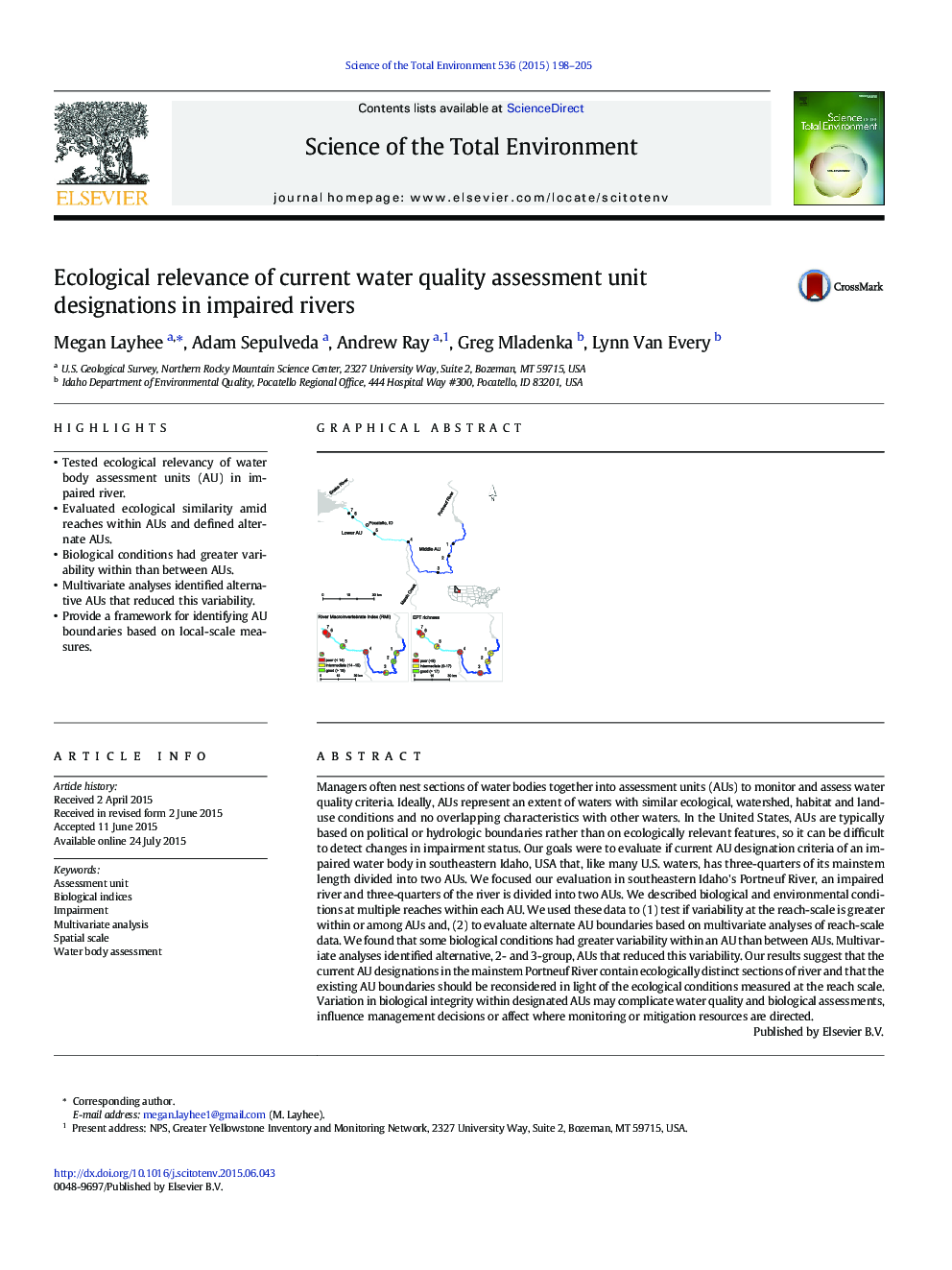| Article ID | Journal | Published Year | Pages | File Type |
|---|---|---|---|---|
| 6325905 | Science of The Total Environment | 2015 | 8 Pages |
â¢Tested ecological relevancy of water body assessment units (AU) in impaired river.â¢Evaluated ecological similarity amid reaches within AUs and defined alternate AUs.â¢Biological conditions had greater variability within than between AUs.â¢Multivariate analyses identified alternative AUs that reduced this variability.â¢Provide a framework for identifying AU boundaries based on local-scale measures.
Managers often nest sections of water bodies together into assessment units (AUs) to monitor and assess water quality criteria. Ideally, AUs represent an extent of waters with similar ecological, watershed, habitat and land-use conditions and no overlapping characteristics with other waters. In the United States, AUs are typically based on political or hydrologic boundaries rather than on ecologically relevant features, so it can be difficult to detect changes in impairment status. Our goals were to evaluate if current AU designation criteria of an impaired water body in southeastern Idaho, USA that, like many U.S. waters, has three-quarters of its mainstem length divided into two AUs. We focused our evaluation in southeastern Idaho's Portneuf River, an impaired river and three-quarters of the river is divided into two AUs. We described biological and environmental conditions at multiple reaches within each AU. We used these data to (1) test if variability at the reach-scale is greater within or among AUs and, (2) to evaluate alternate AU boundaries based on multivariate analyses of reach-scale data. We found that some biological conditions had greater variability within an AU than between AUs. Multivariate analyses identified alternative, 2- and 3-group, AUs that reduced this variability. Our results suggest that the current AU designations in the mainstem Portneuf River contain ecologically distinct sections of river and that the existing AU boundaries should be reconsidered in light of the ecological conditions measured at the reach scale. Variation in biological integrity within designated AUs may complicate water quality and biological assessments, influence management decisions or affect where monitoring or mitigation resources are directed.
Graphical abstractDownload high-res image (108KB)Download full-size image
